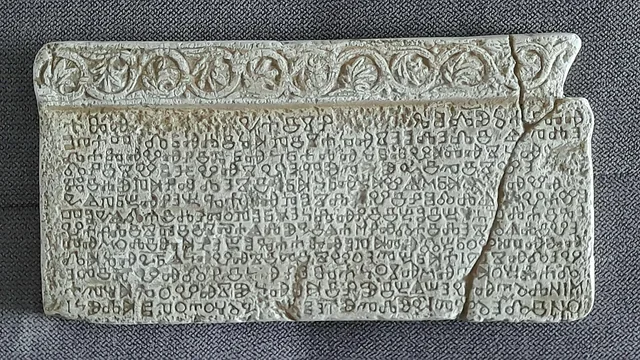
Serbian / Croatian / Bosnian / Montenegrin languange
may appear by any of these names, or by its former name as Serbo-Croatian
Either way, it is a pluricentric (meaning it has multiple variations) language spoken in four Balkan countries
It has many particularities and there are just as many reasons to learn it !

My teaching method is based on three core principles
Adjust
Tailoring classes to student’s needs and wants
Application
Make the lessons functional in real life
Creation
All the materials are made and provided by teacher free of charge
Do you know your level ?
Beginner
If you’re new to studying Serbo-Croatian, this type of lessons might be the right fit for you
Intermediate
If you already have experience in learning the language consider the Intermediate Level Lessons
Advanced
If you feel comfortable communicating, but would like to improve certain skills you’re likely an Advanced Learner
First lesson is free !
Starting the second lesson, following prices apply
50min - $ 20
120min - $ 40
Sliding-scale prices are available. Don’t be shy to reach out.
-
Comprising of over 1000 islands and with a coast longer than 5800km, Croatia offers unlimited choice of towns, beaches, bays and resorts. The town of Pula is a gem of Venetian architecture and a great gateway to the region of Istra and Croatian-Italian bilingual communities. Some of the must-see sights include the Temple of Augustus and the Roman Arena where the annual Pula Film Festival takes place. Moreover, the island of Korčula, an alleged birthplace of Marco Polo, is one of the most magical places in the Mediterranean. With its perfect weather, clear blue waters, citadels, and palmtrees, Korčula is a dream you will want to come back to.
Moving inland, Plitvice Waterfalls are considered among the most beautiful in the world. If you’re visiting in wintertime, Zagreb’s Christmas market has been voted the best in Europe for a number of years. The Croatian capital has an excellent museum offer, including the Contemporary Art Museum and Klovićevi Dvori Gallery.
Learn more!
〰️
〰️
Learn more! 〰️ 〰️
Did you know Croatian language has many regional variations?
Of the four countries where Serbo-Croatian is spoken, regional variety is the starkest in Croatia. The country’s shape, paired with different influences has led to large linguistic differences.
Standard dialect for all the varients of our language is called štokavica (named after how we say what - što / šta), but in Croatia we also find dialects called čakavica (ča?) and kajkavica (kaj?).
Čakavica is stiil activelly spoken along the coast, and it characterised by many Italian words. If you’re spending a summer in Croatia someone might address you with šora or šore (short for signora/signore - Mr/Ms), offer you a pjat (piatto - plate), or ask you if your kušin (cuscino - pillow) is soft enough.
Kajkavica is spoken in and around Zagreb, and that part of Croatia has historically been under German cultural influence. As this dialect is dying out, most of the local words are old-fashioned, but you might still have a chance to hear someone say they’re going to a šnajder (Schneider - tailor), or casually exchange umjetnost (art) for Kunst.

Have you heard of Baščanska ploča ?
Baščanska ploča - Baška Tablet - is the oldest epigraphic monument of Croatian language (and likely of Serbo-Croatian as a whole). It dates back to early 1100s and it was written in the Glagolitic script, in the Croatian varient of Old Church Slavonic. It was located in the island of Krk, until it was discovered in the 19th century and moved to Croatian Academy of Sciences and Arts in Zagreb.
The Tablet’s significance is measred withing Crotian history and language, as it is the oldest mention of Croatian people and Croatian country in their language. but it is also an important monument to the Glagolitic script.
Glagolitic script is the oldest Slavic script (and besides Cyrillic one of the two Slavic scripts). It was an authorial work of the Greek missionary brothers Cyril and Methodius from Thessaloniki. It gained particular popularity and significance among Croats who used it all the way until the 19th century. The way letters are pronounces they read out an inscribed message.
There are very many foreign words!
Balkan region is a cross-road of cultures. Many cultures inhabit it, and many more used to inhabit it. Their coexistence, passing and staying is remembered through the multitude of words of various origin. Whatever languages you might speak, it will help you learn Serbo-Croatian.
Turkish
džezva (cezve), jastuk (yastık), čaršav (çarşaf), pamuk, čarapa (çorap), čelik (çelik), jogurt (yoğurt), dućan (dükkân), šećer (şeker), torba
Greek
period (περίοδος), helikopter (ελικόπτερο), demokratija (δημοϰρατία), energija (ενέργεια), biblioteka (βιβλιοθήκη), anđeo (aγγελος), ikona (εἰκών), harmonija (αρμονία), komedija (κωμωδία), tragedija (τραγωδία)
Hungarian
vašar (vásár), mačka (macska), gulaš (gulyás), varoš (város), soba (szoba), bunda, čizma (csizma), cipela (cipellő), hajduk (hajdu), lopov (lopó)
French
ešarpa (echarpe), plafon (plafond), liker (liquer), žargon (jargon), volan (volant), garderoba (garde-robe), roman, žurnal (journal), butik (boutique), silueta (silhouette)
English
internet, kompjuter (computer), sajt (site), vikend (weekend), miting (meeting), event, šoping (shopping), derbi (derby), fudbal (football), bekstejdž (backstage)
German
flaša (Flasche), knedla (Knödel), šank (Schank), farba, (Farbe), šnajder (Schneider), gepek (Gepäk), šnicla (Schnitzel), kugla (Kugel), princ (Prinz), štimung (Stimmung)


